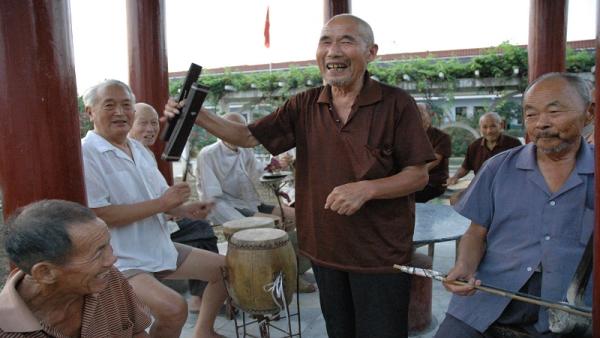| Hannah Bretherton, Institute Assistant, Australia-China Relations Institute, University of Technology Sydney |
1. In 2014 212 million people in China were aged over 60.[1] The number is expected to rise to 480 million by 2050.[2]
2. In 2014 there were 34,000 aged care organisations in China. Within the total health care system 5.5 million beds were allocated to aged care.[3] This equates to 26 beds for every 1000 older people.[4] In comparison the Australian Government aims to allocate 125 beds for every 1000 older people in order to meet the needs of Australia’s ageing population by 2022.[5]
3. China’s nursing homes have an occupancy rate of 52 percent.[6] This compares with Australia’s occupancy rate of 93 percent.[7]
4. In 2014 only 2.8 million people in China used aged care facilities.[8] Reasons cited for the under use include the long-distances from urban centres and high cost for pensioners.[9]
5. China’s middle-income earners find high-end aged care services too expensive and lower end services too basic. Ms Kong Wei from the China National Committee on Ageing said: “Many nursing homes built in recent years are aimed at the high-end market, because they charge more, recover their investment sooner and generate profits more quickly”. There is a gap in the market for middle-range, affordable aged care facilities.[10]
6. In 2014 China had 2.9 million registered nurses.[11] The number of nurses in China per capita is 1.8 per 1000 people. This compares with an average of 8.8 nurses for every 1000 people in OECD countries.[12]
7. On October 29 China abolished its ‘One Child Policy’ stating that: “The change of policy is intended to balance population development and address the challenge of an ageing population”.[13] Experts quoted in The New York Times warned that the change in policy would be unlikely to address China’s demographic concerns in the short to medium term.[14]
8. Under the Free Trade Agreement (FTA) Australia can establish wholly owned aged care institutions in China.[15] It is China’s first FTA to include this provision. However on November 24 2014 China announced that foreign investors could establish wholly owned, for-profit elderly care institutions in China, meaning this provision does not give Australia a distinct advantage.[16]
Endnotes
[1] National Bureau of Statistics China, 2015, ‘Statistical Communiqué of the People's Republic of China on the 2014 National Economic and Social Development’, February 26
[2] China Daily, 2015, More elderly Chinese choose to live in nursing homes, October 8 2015 http://www.chinadaily.com.cn/china/2015-10/08/content_22130227.htm
[3] National Bureau of Statistics China, 2015, ‘Statistical Communiqué of the People's Republic of China on the 2014 National Economic and Social Development’, February 26
[4] China Daily, 2015, More elderly Chinese choose to live in nursing homes, October 8
[5] Commonwealth Government, 2015 ‘Guide to Aged Care Law 4.22 allocation of places’, November 9 2014 http://guides.dss.gov.au/guide-aged-care-law/4/2/2
[6] Ibid
[7] Harriet Alexander, 2015, ‘Hundreds of elderly patients occupy NSW hospital beds in queue for aged care’, Sydney Morning Herald, April 3 2015 http://www.smh.com.au/nsw/hundreds-of-elderly-patients-occupy-nsw-hospital-beds-in-queue-for-aged-care-20150402-1mdr1q.html#ixzz3rhWZ5Ejx
[8] National Bureau of Statistics China, 2015, ‘Statistical Communiqué of the People's Republic of China on the 2014 National Economic and Social Development’, February 26
[9] Li Yang 2014, Nursing homes seek acceptance, China Daily, May 27
[10] Wang Xiaodong, 2015, Nursing home problems most severe for middle-income seniors, China Daily, July 17 2015
[11] National Bureau of Statistics China, 2015, ‘Statistical Communiqué of the People's Republic of China on the 2014 National Economic and Social Development’, February 26
[12] OECD 2014, ‘Health statistics 2014 – how does China compare?’ latest figures based on data from 2012, http://www.oecd.org/els/health-systems/Briefing-Note-CHINA-2014.pdf
[13] Xinhuanet, 2015, ‘China Headlines: China to allow two children for all couples’, October 29 2015, http://news.xinhuanet.com/english/2015-10/29/c_134764064.htm
[14] Javier Hernandez, 2015,’ Experts Weigh Likely Impacts of China’s ‘One Child’ Reversal’, The New York Times, October 29 2015 http://www.nytimes.com/2015/10/30/world/asia/experts-weigh-likely-impacts-of-chinas-one-child-reversal.html?ribbon-ad-idx=8&rref=world/asia&module=Ribbon&version=context®ion=Header&action=click&contentCollection=Asia%20Pacific&pgtype=article
[15] DFAT, 2015, ‘China Australia FTA Factsheet: Trade in Services’, updated August 26
[16] Chinese Ministry of Commerce and Ministry of Civil Affairs, 2014, ‘Announcement on Matters Relating to Foreign Investors' Establishment of For-profit Elderly Care Institutions’, November 24 2014
Author
Hannah Bretherton, Institute Assistant, Australia-China Relations Institute, University of Technology Sydney


